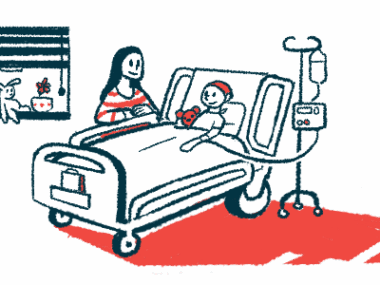Hospitalizations found to drive healthcare costs in CF in new study
Almost half of total costs due to patients dubbed 'super-users'
Written by |

People with cystic fibrosis (CF) who frequently use healthcare resources accounted for almost one-half of total healthcare costs, according to a new Canadian study.
Becoming a frequent high-cost CF healthcare user was linked to severe lung impairment, lung transplant, and liver cirrhosis (a chronic liver disease) with high blood pressure. Women and girls with CF also were more likely to be so-called “super-users.”
Higher costs in this patient population were primarily driven by more inpatient hospitalizations and a greater use of medications, data showed.
“Interventions targeting frequent high-cost CF users may reduce healthcare costs,” the researchers wrote, noting that these super-users “represented 17% of the [total patient group] but accounted for a disproportionate share of costs accounting for … in more recent years nearly one-half of the overall total healthcare costs.”
The study, “Factors associated with frequent high-cost individuals with cystic fibrosis and their healthcare utilization and cost patterns,” was published in the journal Scientific Reports.
New medications seen to increase CF healthcare costs over last 20 years
CF is a progressive multiorgan disease marked by the buildup of thick mucus in the lungs, intestines, pancreas, and liver. Because CF symptoms significantly affect health and quality of life, the disorder can place extensive demands on the healthcare system.
Studies show the cost of CF care has risen dramatically over the past two decades, with most of the increase attributed to expensive new medications. Climbing costs for hospitalizations and due to disease-related complications, such as CF-related diabetes and chronic infection, also play a role. Other factors linked to CF-related costs include age, sex, lung function, and CFTR mutation type.
Patients dubbed super-users are those seen to utilize significantly more healthcare resources than other people with CF.
Researchers say identifying these individuals and addressing their specific needs may help reduce unnecessary spending.
“Understanding their characteristics may help inform opportunities to improve management and care, and potentially reduce costs,” wrote researchers at the University of British Columbia, in Canada.
The team identified CF patients in the province of British Columbia (BC) through the Canadian Cystic Fibrosis Registry (CCFR). These patients were treated from 2009 to 2017.
In Canada, the healthcare system is publicly funded, providing health services to all residents with CF. In BC, this includes covering the cost of visits to CF clinics, hospitalizations, and some CF medications.
The researchers determined healthcare costs for individual CF patients by linking to multiple administrative databases from the BC Ministry of Health. High-cost users were defined as those whose annual total healthcare cost was in the top 10% of expenses for two consecutive years or 50% of their follow-up time if treatment spanned more than two years.
Among 345 eligible CF individuals in the database, 59 (17%) were considered frequent high-cost users. A total of 39 of them (66%) were adults.
At the study’s start (baseline), high-cost users were more likely to be female, have pancreatic insufficiency — not having enough digestive enzymes derived from the pancreas — have CF-related diabetes, and test positive for Pseudomonas aeruginosa, a bacteria that cause lung infections in people with CF.
Moderate or severe lung impairment was more common in the frequent high-cost group than in those without recurring high costs (70% vs. 33%), as was mortality (19% vs. 3%).
Understanding [super-user] characteristics may help inform opportunities to improve management and care, and potentially reduce costs.
Factors significantly associated with frequent high-cost healthcare users included liver cirrhosis-related high blood pressure, severe and moderate lung function impairment, female sex, and peri-transplant phase — specifically, being within two years before or after a transplant. Costs for CFTR modulator therapies did not affect these findings.
When the analysis focused on pediatric patients — those ages 6-18 — CF-related complications were the only factor significantly related to frequent high-cost users. Restricting the analysis to adults did not change the overall results.
Per-patient healthcare costs more than doubled in a decade
In any given year during the study period, frequent high-cost users accounted for up to CA$5.8 million (about $4.3 million), representing as much as 45% of total healthcare costs. Median annual expenditures per patient rose from $41,100 (about $30,000) in 2009 to $103,900 (approximately $76,000) in 2017 — more than doubling.
High-cost users had more specialist visits, emergency department visits, inpatient hospitalizations, and outpatient medication claims.
Inpatient hospitalizations accounted for more than 50% of total healthcare spending, and was the the initial main source of healthcare costs. By comparison, outpatient medications were the primary spending sources among those without high-cost care.
The top contributors to overall costs from 2007 to 2012 — in those with or without high costs — were individual types of outpatient medications, digestive enzymes, and Pulmozyme (dornase alfa), a mucus-thinning agent.
Since then, CFTR modulators have contributed to most of these medication costs for frequent high-cost users. Following those treatments in terms of costs were Pulmozyme, digestive enzymes, and the inhaled antibiotics aztreonam and tobramycin.
“We found that frequent high-cost users exhibit more severe CF at baseline, characterized by female sex, reduced lung function, in the peri-transplantation phase, and having liver cirrhosis with portal hypertension [high blood pressure in the main blood vessel that leads to the liver],” the researchers wrote.
“This group incurs higher costs due to a higher number of hospitalizations and an increased usage of medications,” the team concluded.
For comparison purposes, the researchers noted that “in the United States, where CFTR modulators are increasingly used, the cost of CF care is much higher.”
But overall, “despite variations in cost estimates across different countries and regions, the trend of increasing costs over time for individuals with CF has been well-documented in the literature,” they wrote.








